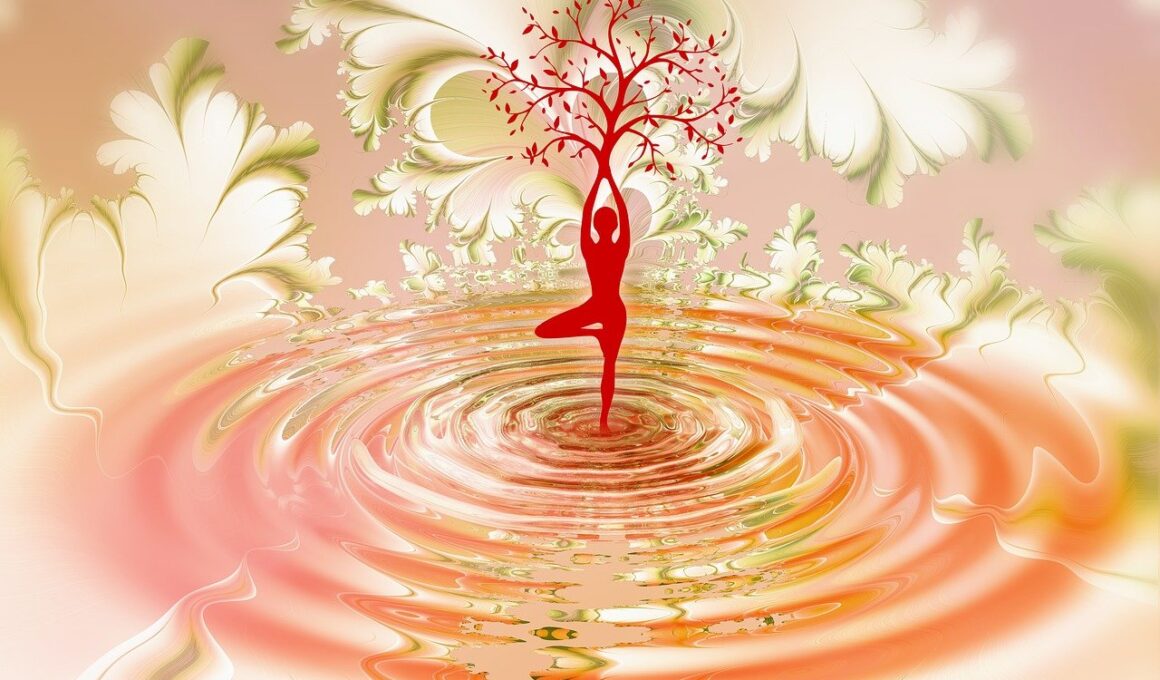Assessing the Long-Term Mental Health Benefits of Dance Aerobics
Dance aerobics has emerged as not just a fun and engaging physical activity, but also as a powerful tool for enhancing mental health. The rhythmic movements, combined with music, foster a unique environment conducive to stress reduction and emotional well-being. Participants often report feelings of joy and satisfaction after engaging in dance aerobics, which can help promote a positive outlook. Additionally, consistent participation in dance aerobics can diminish symptoms associated with anxiety and depression. The social aspect of dance aerobics plays a vital role, creating opportunities for interaction and support among individuals with similar interests. Group classes not only enhance motivation but also build a sense of belonging. This social connection can be significant in cultivating emotional resilience. Studies have shown that regular exercise, including dance, can stimulate the production of endorphins, subsequently leading to decreased feelings of hostility and increased happiness. As individuals commit to a routine, they often develop a greater sense of self-esteem and confidence. This article explores various dimensions of how dance aerobics contributes to maintaining long-term mental health benefits, providing insights into its potential as a therapeutic intervention.
The impact of dance aerobics on mental health is multifaceted, encompassing both psychological and physiological benefits. When individuals engage in dance aerobics, they are not merely burning calories; they are also providing their brains with vital stimulation. The combination of aerobic activities and dance sequences improves cognitive function, enhances memory, and even helps in reducing cognitive decline associated with aging. Music and rhythm not only motivate participants but also play a crucial role in brain activity that relates to mood regulation. Furthermore, the learning process involved in mastering new dance routines continuously challenges the brain, facilitating neuroplasticity. This adaptability of the brain is essential for building resilience against stress. Additionally, dance aerobics offers a unique outlet for individuals to express themselves physically and emotionally, leading to a deeper sense of personal identity and fulfillment. Engaging with the community through group classes promotes socialization, leading to decreased feelings of loneliness and isolation. Ultimately, dance aerobics serves as a holistic approach to mental health, balancing physical exertion with emotional expression, making it an ideal activity for individuals seeking improved well-being in every aspect of their lives.
A crucial aspect to consider is the accessibility of dance aerobics for various populations. This activity can be adjusted to cater to different age groups, fitness levels, and even physical limitations. Individuals with disabilities or those recovering from injuries can modify dance routines to ensure they are safe yet effective. For older adults, gentle dance aerobics can provide an enjoyable way to maintain mobility and balance while also engaging socially with peers. Similarly, for younger audiences, dance aerobics can serve as a creative outlet, allowing them to express themselves while promoting physical fitness. Various community centers and fitness studios have begun to offer inclusive classes, encouraging participation from all demographics. This inclusivity also aids in fostering an environment of acceptance and community solidarity. The availability of online classes has further expanded access, enabling individuals to participate from their homes. This convenience is especially relevant in today’s climate, where social distancing measures are often necessary. Understanding the various adaptations of dance aerobics allows for a broader audience to benefit from its extensive mental health advantages, highlighting the need for widespread promotion and encouragement within communities.
Scientific research has underscored the mental health benefits of physical activity, with dance aerobics emerging as an engaging option. Studies suggest that regular participation leads to significant reductions in anxiety and depression levels. For instance, a study indicated that participants who practiced dance aerobics experienced heightened mood improvements compared to those engaging in traditional forms of exercise. The rhythmic nature of dance aerobics can assist in the release of pent-up emotions, allowing individuals to process their feelings constructively. Moreover, consistent physical activity is linked to improved sleep patterns, which are vital for maintaining mental stability. Sleep disturbances are often a concern for those experiencing mental health issues, making this connection significant. Furthermore, the social environments fostered during dance aerobics classes encourage participants to share their experiences and emotions, contributing to overall mental wellness. As individuals witness their progress in dance aerobics, whether in skill or physical appearance, it further boosts self-worth and motivation. Regular self-reflection during this process fosters personal growth, highlighting the importance of self-care and its relationship with mental health.
In examining the broader societal impact, dance aerobics can serve as a preventive measure against more severe mental health disorders. Community-wide initiatives encouraging physical activity through dance can lead to healthier populations. Public health campaigns focusing on the mental health benefits of exercise emphasize activities like dance aerobics to promote the overall well-being of society. Interventions utilizing dance in schools provide students with tools to cope with stress and anxiety, fostering positive mental health from an early age. This early adoption can result in lifelong habits that prioritize mental wellness. Furthermore, integrating dance aerobics into treatment plans for mental health conditions presents an innovative approach to therapy. Health professionals may recommend dance aerobics as part of a comprehensive treatment strategy. As communities learn more about the advantages of this exercise form, support for mental health initiatives becomes stronger. The encouragement of dance aerobics not only contributes to individual health but also unifies communities in their quest for improved mental well-being. This shared commitment marks a progressive step towards destigmatizing mental health issues and promoting supportive environments.
As we advance, recognizing the correlation between dance aerobics and mental health cultivates a need for further exploration and understanding. Research focusing on the long-term effects of dance aerobics on mental health outcomes could provide valuable insights. Investigating the physiological impacts on the brain during aerobic dance can unveil how endorphins and neurotransmitters like serotonin influence mental well-being. Establishing standardized measures to evaluate mental health improvements through dance can assist in validating its therapeutic potential. Additionally, qualitative studies examining participants’ personal stories and experiences may enrich our grasp of its transformative power. It is also crucial to consider logistical challenges in promoting dance aerobics, such as accessibility and resource allocation for programs. Stakeholders, including educational institutions, health departments, and community organizations, should collaborate to create initiatives encouraging participation in dance aerobics. By aligning public awareness campaigns with local classes, we can facilitate greater involvement. Finally, sharing positive testimonials from participants can inspire others to join in, fostering a culture that prioritizes health and happiness through dance aerobics, ultimately leading to more extensive acceptance of its role in mental health treatment.
In conclusion, dance aerobics represents a unique and powerful mode of self-care that benefits mental health significantly. Its engaging and enjoyable nature makes it an appealing choice for individuals seeking physical activity while also focusing on emotional well-being. The multifaceted benefits, from neurobiological improvements to social connectivity, highlight dance aerobics’ extensive reach. Furthermore, the adaptability of this exercise allows diverse populations to partake, ensuring a broad spectrum of individuals can experience its advantages. Scientific research continues to affirm the importance of physical activity in combating mental health challenges, with dance aerobics showing promising results. As communities recognize these benefits, advocacy for dance aerobics as an integral part of mental health strategies will likely grow. Awareness campaigns can further solidify its place within wellness-oriented lifestyles. The ongoing exploration of its long-term effects can open new avenues for therapeutic interventions. A joint effort to promote inclusivity, accessibility, and community support is crucial in harnessing the full potential of dance aerobics. Ultimately, as mental health becomes a higher priority, activities like dance aerobics stand out as valuable tools in enhancing the quality of life for many individuals.


